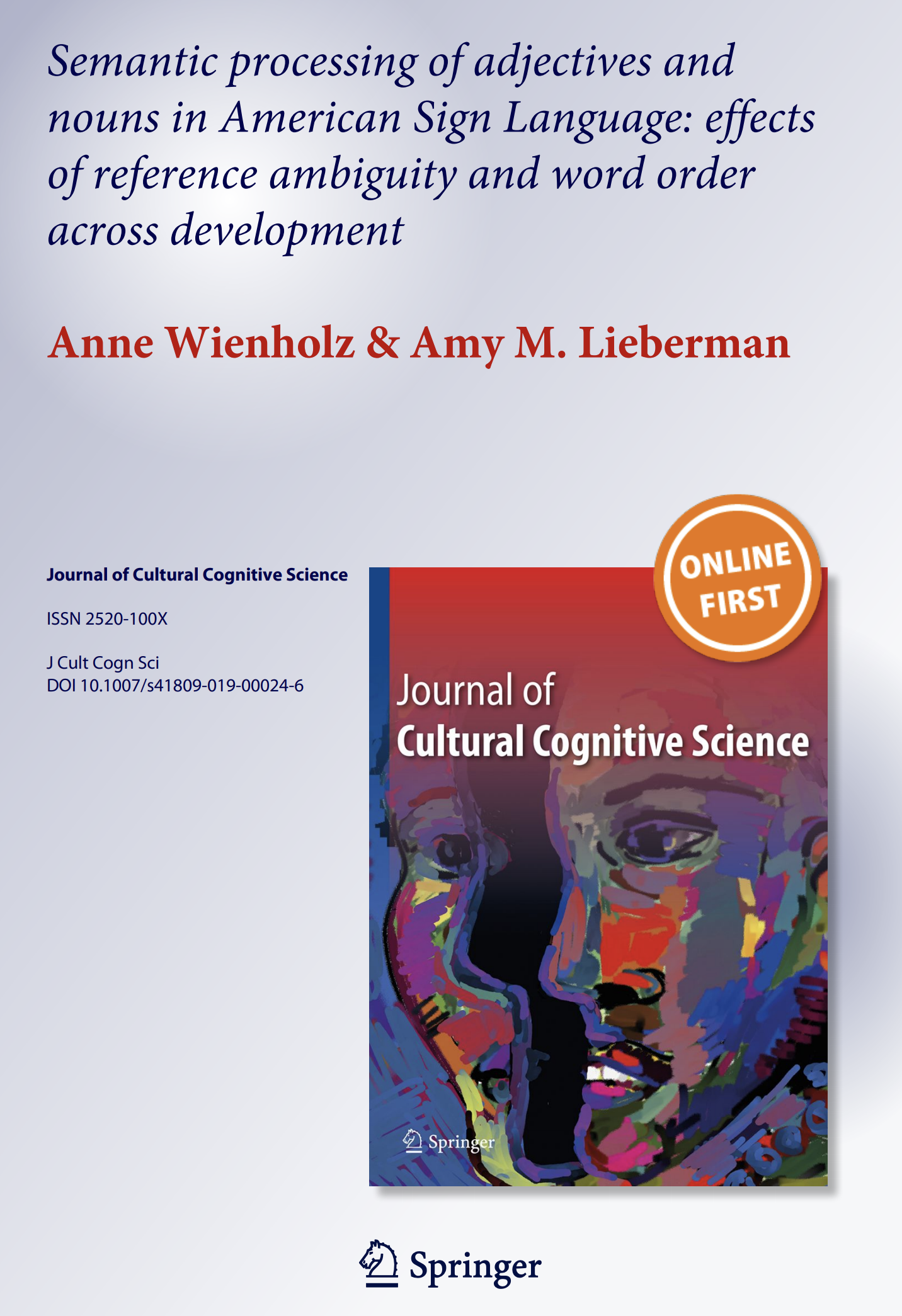New paper! Processing of ASL adjectives and nouns in deaf adults and children
Our paper “Semantic processing of adjectives and nouns in American Sign Language: effects of reference ambiguity and word order across development” was recently published in Journal of Cultural Cognitive Science. In this study, we presented deaf children and adults with simple ASL sentences containing nouns and color adjectives (e.g. FIND YELLOW WHAT? FLOWER), and we monitored their eye movements using an eyetracker while they watched sentences. While watching the sentences, individuals also saw four pictures. One was always the target (in this case, the yellow flower). The other three pictures overlapped with the target either in color or object type (e.g. a yellow dress, or a red flower), or not at all. This allowed us to examine how signers process information from both the adjective and noun as an ASL sentence is unfolding to arrive at the final target. Both adult and child participants were very fast to recognize exactly how much information they needed from the sentence before they could identify the target. This study helps us understand that even when language (the ASL sentence) and visual information (the surrounding pictures) must be processed in the visual modality, even young deaf children, as long as they have early access to ASL, can manage their visual attention efficiently. Read the full paper here!
